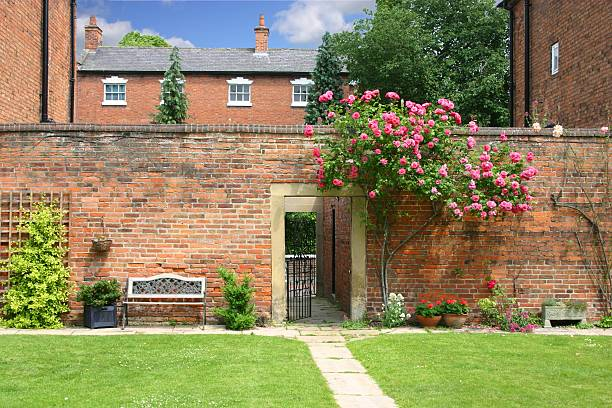In the quest to fortify structures against moisture intrusion, rendering emerges as a transformative solution. This guide delves into the intricate world of damp issues, unraveling the mysteries of rendering damp exteriors to answer a pressing question: will rendering stop damp?
As an integral part of maintenance, understanding how to stop damp coming through walls is crucial.
Discover the power of rendering in preventing and mitigating penetrating dampness, ensuring structural integrity and a healthier living environment.
A Guide To Understanding Damp Issues
Damp, a perennial adversary of structures, manifests through many sources. To comprehend the complexities of damp problems, we must first dissect the common causes of penetrating damp in walls.
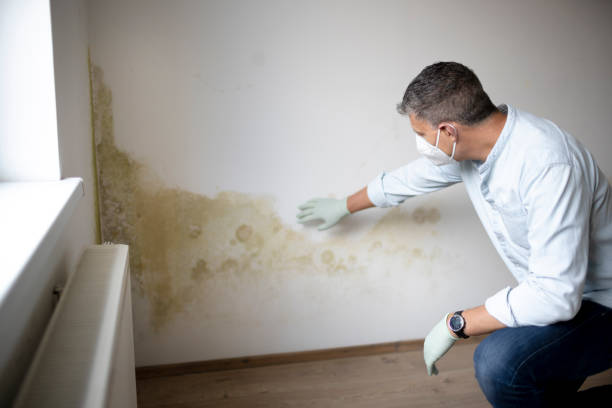
Common causes of penetrating damp in buildings
Penetrating dampness, a persistent woe for many structures, stems from many sources.
External factors represent a primary catalyst, with relentless rain and humidity penetrating walls. Faulty roofs, poorly sealed windows, and porous building materials exacerbate the issue, allowing moisture to breach the building envelope and damage the cement and other parts of the wall.
Conversely, internal factors such as inadequate ventilation and unnoticed leaks contribute significantly. When left unaddressed, these internal issues create an environment conducive to damp formation.
Impact of Dampness on Building Structures and Health
The repercussions of dampness extend beyond mere aesthetics. The structural integrity can be compromised as dampness infiltrates walls and foundations, leading to decay and weakening of the overall framework. Moreover, damp environments foster mold growth, posing serious health risks to occupants.
Respiratory issues, allergies, and other health complications can arise from prolonged exposure to damp conditions. This is because the dampness within can make cracks in the walls and introduce mold to the air, which is not breathable for health-focused individuals.
Thus, understanding the profound impact of dampness on both the brickwork and its inhabitants underscores the urgency of effective solutions, rendering damp exterior a key preventive measure against these detrimental effects.
The Role of Exterior Rendering
At its core, rendering is the application of a protective coating to surfaces. This process serves a dual purpose: enhancing aesthetics and fortifying the structure against external elements.
Rendering damp exterior involves meticulously applying a specialized mixture, creating a resilient shield that guards against moisture intrusion. It’s a proactive approach to combat the very question on the minds of many homeowners: will rendering stop damp?
How rendering acts as a protective layer
They act as an impenetrable barrier, impeding moisture ingress into the brickwork. Covering external walls with a well-applied rendering layer gives the structure enhanced resistance to rain, humidity, and other weather-related challenges.
This protective layer prevents water from seeping into the walls, addressing one of the fundamental causes of penetrating dampness. The role of rendering, therefore, becomes paramount in maintaining a dry and durable envelope.
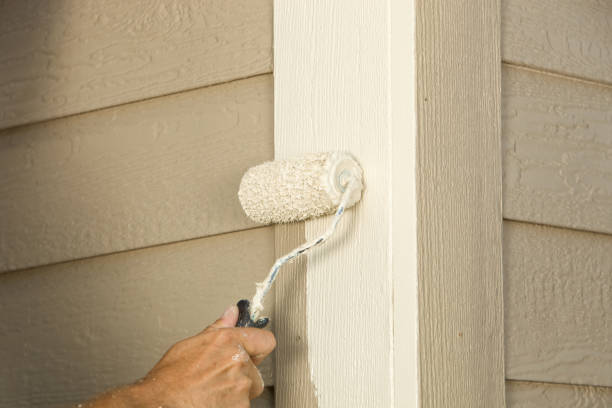
A Guide to the Types of Rendering Materials
The efficacy of rendering in preventing dampness largely depends on the choice of materials. Each type brings unique qualities, influencing breathability, flexibility, and durability. Understanding the nuances of these materials becomes pivotal in making informed decisions about how to stop damp coming through walls as it does.
Benefits of Exterior Rendering in Penetrating Damp Prevention
Following are the benefits of exterior rendering in penetrating damp prevention :
Waterproofing properties of rendering
One of the primary benefits of exterior rendering lies in its remarkable waterproofing properties. Applying a high-quality render creates a watertight barrier that shields the building from the detrimental effects of moisture.
By preventing water ingress, rendering significantly contributes to preventing and mitigating penetrating dampness. Homeowners seeking a reliable solution to the question, “Will rendering stop damp?” find assurance in the formidable waterproofing capabilities of this protective layer.
Enhanced insulation and ventilation
Beyond damp prevention, rendering is crucial in improving the overall insulation and ventilation. The render is an additional insulation layer, reducing heat loss and enhancing energy efficiency.
Moreover, the breathability facilitates proper ventilation, preventing the buildup of damp-inducing condensation. This dual functionality creates a more comfortable living environment while fortifying the building against penetrating dampness.
Aesthetic improvements and increased property value
While the primary goal of rendering is damp prevention, the aesthetic enhancements it brings should be noticed. Exterior rendering provides a polished and cohesive finish to the building’s facade, concealing imperfections and creating a visually appealing exterior.
Beyond aesthetics, the improved condition and durability offered by rendering contribute to increased property value. The investment in rendering becomes a multifaceted solution, offering both practical damp prevention and an aesthetic transformation that adds value to the property.
Step-by-Step: How Rendering Can Stop Damp
This step-by-step guide will walk you through the process, offering insights into the materials needed, preparation steps, and the application technique to successfully employ rendering as a means to halt dampness in its tracks.
Step 1: Preparing the walls for rendering
The journey to prevent dampness through rendering begins with meticulous preparation. This initial step involves inspecting and repairing the existing walls. Any cracks or imperfections must be addressed to ensure a smooth and uniform render application. Proper preparation sets the foundation for a productive rendering damp exterior solution.
Step 2: Choosing the right rendering materials
Selecting the appropriate rendering materials is a pivotal decision in the process. The choice between cement-based, lime, or polymer-modified renders depends on the building’s location, environmental conditions, and desired finish.
Understanding these options is crucial in determining how to stop damp coming through walls. The selected matter should align with the specific requirements of the brick structure to maximize damp prevention.
Step 3: Application process and techniques
The application process takes center stage with the walls prepared and the rendering material chosen. Skilled application techniques ensure an even and well-bonded rendering layer.
Whether applying a scratch coat, followed by drying and then a second coat, or opting for a single coat, depending on what substance you’ve chosen, precision in the application is vital for the success of the damp prevention strategy.
Step 4: Curing and finishing touches to Stop damp
Once the rendering is applied, the curing process begins. Proper curing allows the render to achieve its optimal strength and durability. During this phase, finishing touches can be applied, such as smoothing the surface or adding texture.
This final portion contributes to the visual appeal and reinforces the protective barrier against moisture. The culmination of these processes ensures a comprehensive solution to the question, “Will rendering stop damp?” offering both aesthetic and functional benefits.
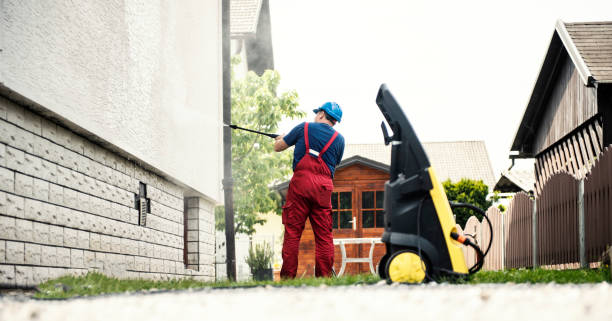
DIY vs. Professional Rendering: What Will Work Best?
When it comes to addressing dampness through rendering, the decision between DIY application and hiring a professional holds significant weight. Both avenues have their merits and considerations that can impact the effectiveness, durability, and overall outcome of the rendered surface. Exploring the nuances between the two approaches is crucial in determining the best course of action suited to your specific needs, resources, the extent of the damp issue at hand, as well as how long rendering will last.
Pros and cons of DIY rendering
Embarking on a do-it-yourself rendering project offers homeowners a hands-on approach to addressing defects caused by dampness. The pros of this rendering include potential cost savings and a sense of accomplishment.
However, challenges such as lack of experience, potential errors in material application, and inadequate preparation may compromise the workability of the rendering damp exterior solution. Understanding the cons of the former is crucial for homeowners weighing the option.
When to hire a professional rendering service?
While doing it yourself has its merits, certain scenarios warrant the expertise of professional rendering services. Complex creations, intricate designs, or time constraints may necessitate the skills of seasoned pros.
Knowing when to hire an official rendering service ensures that the damp prevention process is executed with precision, minimizing the risk of errors that could compromise the effectiveness of the rendering in stopping dampness.
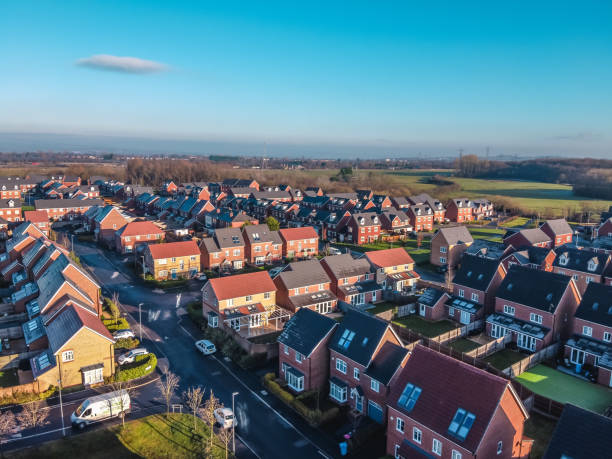
Cost considerations and long-term benefits
Comparing the costs to those of official services involves assessing the immediate expenses and long-term benefits. While doing it yourself may seem more cost-effective initially, potential errors could lead to costly repairs.
While an upfront investment, these services often deliver higher-quality results and long-term durability, addressing not just immediate damp concerns but also contributing to the longevity of the walls of a building.
Understanding the cost considerations and long-term benefits aids homeowners in making informed decisions tailored to their specific needs and ensuring a better damp prevention strategy.
Key Takeaways
- Rendering creates a protective shield, preventing water penetration into walls, effectively addressing and mitigating penetrating damp issues.
- By forming an impermeable layer, rendering contributes to maintaining the structural integrity of walls, safeguarding against damage caused by moisture ingress.
- Rendering not only resolves dampness but also enhances the appearance of walls, adding to the visual appeal and potentially increasing the property’s market value.
Frequently Asked Questions
How do we identify penetrating damp issues?
Identifying signs of penetrating dampness involves vigilant inspection. Look for damp patches on walls, peeling paint, or a musty odor, especially after rainfall. These indicators often point to water ingress and potential damp problems.
Will DIY treatment effectively prevent dampness, or should I hire a Pro?
While doing it yourself can be cost-effective, professional services often ensure precision and durability. Hiring a professional is advisable for complex projects or when expertise is paramount in achieving effective damp prevention.
What are the long-term benefits of applying and maintaining these surfaces?
Applying and maintaining provides long-term benefits such as enhanced durability, visual appeal, and effective damp prevention. Proper maintenance ensures the sustained efficacy of this process in stopping dampness over time.
Conclusion
In building maintenance and damp prevention, the efficacy of rendering damp exterior emerges as a formidable solution. Delving into the question, will rendering stop damp? This comprehensive guide has navigated the intricacies of identifying, preventing, and addressing suffering caused by dampness.
From understanding the impact of dampness to unraveling the process of applying render, each section reinforces the significance of this protective measure.
As homeowners seek answers on how to stop damp coming through walls, the dual benefits of damp prevention and aesthetic enhancement make this process a cornerstone in creating resilient, dry, and enduring masonry and walls. Embracing it is not just a preventive measure; it’s an investment in the long-term well-being of exterior walls and the like.



